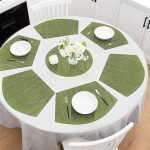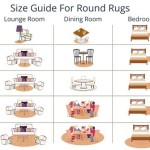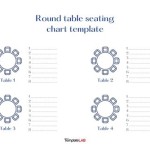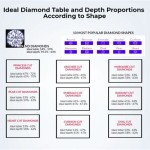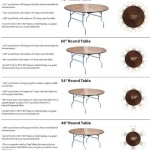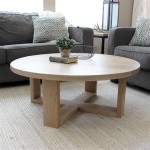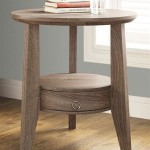How To Make A Small Table In Minecraft
Minecraft, the sandbox video game developed by Mojang Studios, offers players near-limitless creative possibilities. Beyond the core gameplay loop of survival and exploration, many players dedicate significant time to building aesthetically pleasing structures and furnishing them with intricate designs. Among the decorative elements frequently desired is the simple, yet functional, small table. While Minecraft lacks a pre-defined “table” block, players can utilize various existing blocks and techniques to construct convincing and visually appealing small tables suitable for diverse environments, from medieval castles to modern homes.
The creation of a small table in Minecraft is primarily a process of leveraging existing blocks in creative ways. The game encourages experimentation and allows players to combine different blocks to achieve the desired aesthetic. There are several methods to construct a small table, each with its own advantages and disadvantages, primarily relating to resource cost, visual appeal, and structural integrity. This article will explore some of the most common and effective methods for creating small tables within the game, providing step-by-step instructions and visual considerations.
Method 1: The Fence and Pressure Plate Table
This method is perhaps the most straightforward and commonly used for creating small tables in Minecraft. It relies on the visual properties of fences and pressure plates to mimic the look of a table leg and tabletop, respectively. The simplicity of this design makes it accessible to players of all skill levels and stages of the game, as the required resources are generally readily available.
To construct this table, the player first needs to gather the necessary materials. These include a fence, preferably made of oak wood, but other wood types can be used to suit the desired aesthetic. Fences act as the table legs. The number of fences required depends on the desired height of the table. Typically, one fence block is sufficient for a small table. Next, a pressure plate is required for the tabletop. Pressure plates come in various materials, including wood, stone, iron, and gold. Wooden pressure plates are often favored due to their aesthetic similarity to wooden fences, creating a cohesive look. The choice of pressure plate material ultimately depends on the desired style of the table and the surrounding environment.
The construction process is simple. The player places the fence block in the desired location. This single fence block acts as the table's support structure. After placing the fence, the player places the pressure plate directly on top of the fence. The pressure plate will automatically center itself on the fence block, creating the illusion of a tabletop. It is crucial to ensure the pressure plate is placed correctly, as misalignment will detract from the visual appeal of the table.
The advantage of this method lies in its simplicity and resource efficiency. Fences and pressure plates are relatively easy to obtain in most Minecraft environments. Furthermore, the construction process is quick and requires no specialized tools or skills. A potential drawback is the limited customizability. The height of the table is determined by the fence block, and the size and shape of the tabletop are constrained by the dimensions of the pressure plate. However, the overall aesthetic is generally pleasing and serves well for simple decorative purposes.
Method 2: The Slab and Trapdoor Table
This method offers a slightly more refined and customizable approach to table construction. It utilizes slabs and trapdoors to create a more visually complex and potentially more robust-looking table. While still relatively simple, this method allows for more variations in design and can be used to create tables with different shapes and styles.
The materials required for this method include slabs, which can be crafted from various materials like wood, stone, or quartz. Slabs are half-blocks, allowing for finer control over the table's height and appearance. The choice of slab material significantly impacts the table's overall aesthetic. Wooden slabs are generally used for rustic or medieval designs, while stone or quartz slabs can create a more modern or elegant look. Trapdoors are also required. Like slabs, trapdoors come in various wood types, allowing for aesthetic matching with the slabs. Trapdoors serve as the table legs in this design.
The construction process begins with placing the slab at the desired location. This slab serves as the tabletop. The player then places trapdoors around the slab to create the legs. The placement of the trapdoors is crucial to the table's appearance. Typically, four trapdoors are placed around the corners of the slab, with each trapdoor oriented vertically and attached to the side of the slab. The trapdoors are then flipped down so that they form a leg-like structure beneath the slab. The player can experiment with different trapdoor placement patterns to achieve various visual effects. For example, placing trapdoors along the sides of the slab instead of the corners can create a different style of table leg.
The advantage of this method is its increased customizability. The player can choose different slab and trapdoor materials to create various aesthetic styles. The placement of the trapdoors also allows for greater design flexibility. A potential drawback is the slightly more complex construction process compared to the fence and pressure plate method. Properly aligning the trapdoors and ensuring they are flipped down correctly requires some attention to detail. However, the resulting table is often more visually appealing and offers a more convincing illusion of a real-world table.
Method 3: The Anvil and Carpet Table
This method is a more advanced and potentially more resource-intensive approach to table construction. It utilizes anvils and carpets to create a unique and visually striking table design. This method is often favored by players seeking a more unconventional or whimsical aesthetic. It also provides a smaller tabletop than the previous examples.
The required materials include an anvil and carpet. Anvils are crafted from iron blocks and are relatively expensive to produce. Therefore, this method is typically employed by players who have established a significant iron resource base. Carpets come in a wide variety of colors, offering extensive customization options for the tabletop. The choice of carpet color significantly impacts the table's overall appearance and should be carefully considered to match the surrounding environment and desired aesthetic.
The construction process is simple. The player places the anvil in the desired location. The anvil serves as the base and support structure of the table. After placing the anvil, the player places the carpet directly on top of the anvil. The carpet will automatically center itself on the anvil, creating the illusion of a tabletop. It is crucial to ensure the carpet is placed correctly, as misalignment will detract from the visual appeal of the table. Carpets do not occupy the entire anvil surface but rather rest on top of it, creating visual interest.
The advantage of this method lies in its unique visual appeal and extensive customization options. The anvil provides a sturdy and visually interesting base, while the wide variety of carpet colors allows for nearly limitless tabletop variations. A potential drawback is the high resource cost of anvils, making this method less accessible to players in the early game. Furthermore, the size of the carpet tabletop is relatively small, making this method best suited for small decorative tables rather than larger, functional tables.
Beyond these three primary methods, variations exist. For example, players can use upside-down stairs as table legs, or combine slabs and fences for a more complex design. The limitations are only those of the player's creativity and resourcefulness. The key is understanding the properties of the available blocks and experimenting with different combinations to achieve the desired visual effect. The ability to create custom furniture, such as small tables, contributes significantly to the overall immersive and creative experience offered by Minecraft.

Minecraft Table Designs Furniture

Minecraft Table Designs Furniture

Minecraft Table Designs Furniture

Minecraft Table Designs Furniture

Simple Coffee Table Minecraft Furniture

Minecraft Table Designs Furniture

How To Make Furniture In Minecraft Wonderhowto

How To Make Furniture In Minecraft Wonderhowto

Minecraft How To Make A Table Improved Version

Minecraft Table Designs Furniture
Related Posts


